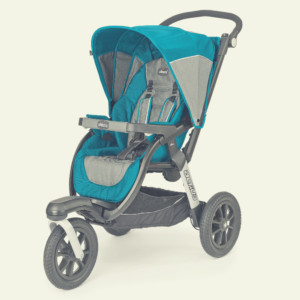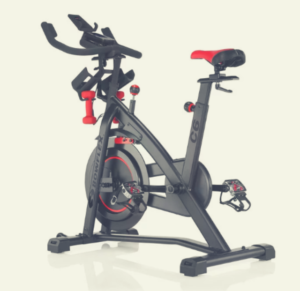If you are in a hurry and just want to find out what the best insoles for hiking, then I’d recommend the Physix Gear Sport Orthotic Inserts as the best one.
So, you’ve decided to slip insoles into your hiking shoes, but how do you choose the best insoles for hiking when there are numerous available?
Well, we scoured the internet for you to find five top-rated insoles that may ease your experience.
In addition, we created a buyer’s guide to teach you more about what to look for.
Here are the top insoles we’ll be reviewing:
- Sof Sole Insoles Men’s Athlete Performance Full-Length Gel Shoe Insert
- Superfeet Trailblazer Comfort Insoles
- Superfeet Green Insoles, Professional-Grade High Arch Orthotic Insert
- Envelop Gel Inserts
- Physix Gear Sport Full Length Orthotic Inserts

Insoles for Hiking – What You Need to Know
It’s important that you choose the right insoles to fit your shoes so that you actually feel comfortable during your journey.
There are a number of considerations to focus on that may help you narrow down your options.
Benefits of Wearing Insoles for Hiking
There are a number of reasons why you may want to use insoles in your hiking shoes or boots.
One of the advantages is that they may help you remedy foot and heel pain.
Insoles may provide more cushioning that your normal shoes lack. They can also distribute pressure evenly to absorb shock.
Certain insoles might help ease the tension in your feet that can lead to fatigue. This way, you may be able to go on longer hikes.
For those of you who may suffer from flat feet or fallen arches, proper insoles can offer you relief so that you can still enjoy the likes of hiking.
This is because insoles have the chance to relieve pain by offering your arch better support.
Important Features to Look For
Before you decide on any of the products we review, there are some key features that you want to keep in mind.
These may better help you determine which insoles will work best for your situation.
Type
There isn’t just a single design type when it comes to insoles. Generally, you’ll find support and comfort-style.
Comfort insoles are usually made from foam or gel and feature shock absorbing properties intended for extended wear.
On the other hand, support insoles feature the use of much firmer materials to offer better structural support. You may see them referred to as sport insoles.
Volume
Just as there are different types of insoles, the volume of insoles vary from one another. Volume refers to how much space they will take up in your shoes.
There are low-volume, medium-volume, and high-volume insoles. What works best for you depend on the arch support you need as volume and arch go hand-in-hand.
When it comes to low-volume insoles, they fit best in shoes if you already have a naturally lower arch.
Medium-volume insoles are all-purpose in design as they can work with a variety of different arches.
For hiking shoes, high-volume insoles may be best since they’re thicker than the other two types. They may also be ideal if you have higher arches.
Flexibility
As you’re hiking, it’s common for your foot to move around. So, it would also make sense that your insoles have a good deal of elasticity to make things more comfortable.
Since your feet naturally guide the movement of the rest of your body, flexible insoles also ensure that your outdoor experience is easier.
Comfort and Support
Whatever insoles you choose for your hiking shoes, they shouldn’t feel painful or difficult to wear.
Consider the ones that adequately combine both comfort and support.
There are quality insoles made with cushioning like gel pads to keep your feet from aching on long hikes.
Some also offer a well-fitted or deep heel cup that aids in giving you support while properly absorbing shock.
Also, consider the risk of slippage.
A deep heel cup may also help secure the insoles to your feet better.
Insoles that are ergonomically designed can aid in offering security as well.
Some are even designed with a textured base to ensure that they won’t move.
Material
The best insoles for hiking are ones that actually last you awhile. They should be able to maintain their shape so you’re not frequently replacing them.
Some even have a recommended “expiration date”, so to speak.
For instance, a pair of insoles may last you around 500 miles or so, which should be ample time to get in some quality hiking for a few months or a year.

Top 5 Best Insoles for Hiking – Reviewed
Sof Sole Insoles Men’s Athlete Performance Full-Length Gel Shoe Insert
The Sof Sole Insoles Men’s Athlete Performance Gel Shoe Insert offers an inexpensive mean to staying comfortable during long hikes.
They feature a neutral arch designed in an effort to allow for wearers with various feet type to use them. Even still, you can readily trim down the toe area so that they will fit better.
You may wish to take caution the type of shoes you use these with.
As the insoles appear rather thick, they may cause your foot to press up more against your shoe, causing some pressure.
Shoes with more room may have an easier time using these insoles.
For the support and comfort, there are gel pads found in the heel and forefoot. These may provide for ideal cushioning to better absorb shock.
They may show signs of wear and tear early on though. However, the rest of the insoles appear to withstand frequent use better.
The material feels soft as well so the insoles may not irritate your feet. There is also some moisture management to reduce the chance of you building up sweat.
Pros
- Soft materials
- Stay in place well
- Capable of being trimmed
Cons
- May be too thick
- Gel pads might wear down fast
Superfeet Trailblazer Comfort Insoles
The Superfeet Trailblazer Comfort Insoles are intended to last you a long time as they maintain their shape and feature Moisturewick for odor control.
In fact, they’re meant to last you either 12 months or up to 500 miles before wearing out.
These insoles provide quality security so you don’t experience any shifting around. This may also reduce the risks of you developing any hot spots.
To better support you, the insoles have a contoured silhouette to cradle your heel and arches.
They work with the natural shape of your feet to enhance your movement. With their heel impact technology, shock is dispersed in order to decrease the stress you may experience.
Additionally, the insoles have dual comfort foam to improve the support and comfort on harsh terrains.
These do feel a touch stiff though, so it’s questionable how long you can wear them at a time. Also, the edges of the heel cup come across as high and rigid.
This may also cause some discomfort over time and the chance to irritate the heel.
Pros
- Reduces the chance of shifting
- Good odor control
- Keep their shape well
Cons
- Heel cups may be too rigid
- Feels stiff
Superfeet Green Insoles, Professional-Grade High Arch Orthotic Insert
The Superfeet Green Insoles, Professional-Grade Orthotic Inserts are high volume insoles intended to support those of you with higher arches.
They’re full length, so you may need to trim them before they will fit your shoes.
They may take some time breaking in though as the inserts may initially feel rough. The arches could benefit from having a bit more give as they feel rather stiff.
However, once they fit well, there is a good deal of support in the arch area especially.
The deep heel cup design aids in providing support and stability, helping you absorb more shock to reduce the pressure you may feel during those longer outdoor journeys.
Also, there is a high-density foam layer that helps provide both cushioning and support to your feet.
These are meant to have quality durability as well, going either 12 months or 500 miles.
However, there is a chance that you may wear them down sooner than intended. Under light to moderate hiking, the inserts might hold up well.
Pros
- Good cushioning
- Deep heel cup helps with shock absorption
- Quality arch support
Cons
- Take some time to break in
- Could benefit from having more give
Envelop Gel Inserts
The Envelop Gel Inserts have a unique design thanks to their textured base.
This allows the inserts to better grip your shoe, granting you more stability as they remain in place.
The overall construction of them allows the insoles to hold their shape too to reduce the chance of you experiencing any flattening.
As they are full length, you are meant to trim them down for size, but it seems like an easy enough task to complete.
This helps you gain a more customized, comfortable fit. Do be aware that the insoles may feel a touch heavy though, which might not make them the easiest to wear in certain shoes.
When it comes to the support, the insoles do feel a touch thin. As such, they may have a difficult time lasting for extended hikes.
On the more average outdoor excursions, these do offer some good shock absorption. This is due to the honeycomb-like design in the heel and forefoot that absorbs the impact.
For additional support, these insoles are constructed in an ergonomic fashion. This contours to feet with neutral arches so that many different people may wear them.
Also, they may be among the best insoles for hiking sold at such an affordable amount.
Pros
- Textured grip to reduce slippage
- Retain their shape
- Easy to cut down
Cons
- May feel too heavy
- Seem too thin
Physix Gear Sport Full Length Orthotic Inserts
The Physix Gear Sport Full Length Orthotic Inserts are considered the best insoles for hiking due in large part to just how robust they are.
They feature a deep heel cradle to aid in your stability, and they also have a low-profile layout to help with comfort.
Arch support and the heel cup are both semi-rigid. This design may assist in giving you that much more security while you’re on-the-go.
These may take you some time to fully break-in though. They may come across as stiff.
The cushioning itself doesn’t seem to be that thick, however, even with the EVA foam.
With it being thin, it may better benefit those of you who don’t tend to hike long hours at a time. Even so, the layered foam seems to do well at absorbing shock.
The insoles are ergonomically designed to help you wear them easier.
There is a good amount of room in the toe area to make them more comfortable as well. They’re not just simple to insert, but they seem to offer next to no slippage.
Pros
- High-quality material
- Easy to insert
- Ergonomic, non-slip design
Cons
- Lengthy break-in period
- Might need more cushioning
Final Thoughts
Hiking should be an enjoyable time, so you don’t want something as manageable as foot discomfort to get in the way.
The proper insoles can keep you comfortable and safe, and by teaching you what you should know about them and providing five top-rated products, you should come away with an idea on finding the right pair.
For us, the best insoles for hiking are the Physix Gear Sport Orthotic Inserts.
They’re crafted from long-lasting material that may help you feel comfortable and secure knowing that the inserts can last you through a countless number of hikes.
They’re ergonomically shaped to better mold with your foot inside the shoe. Slippage is next to none, and the cushioning that’s available absorbs shock well.









